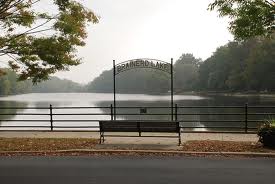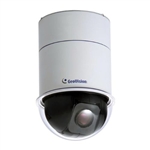Cranbury CCTV & Security Cameras
There have been many questions about the town's name. We do not know the origin of the Cranberry spelling. The marshy land near the mill site might have grown cranberries, hence the name. On the I8th century maps the name appears as Cranberry and Cranberry Town. In 1857 Rev. Joseph G. Symmes felt the name was incorrectly spelled and suggested it be changed to Cranbury. In Old English "bury" (burh) could be spelled bury, bery, or berry. In 1869 the town and brook were renamed Cranbury. On March 7, 1872 Cranbury Township was officially created and organized as a separate political subdivision of Middlesex County consisting of the village of Cranbury and outlying area, which were then parts of South Brunswick and Monroe Townships.

In 1664 King Charles II of England granted to his brother James, the Duke of York, a vast domain in North America stretching from New York to Delaware, including the land which is now New Jersey. In its earliest days Cranbury was part of the colony of East New Jersey, which was granted to Sir George Carteret by the Duke of York and controlled by a board of twenty-four proprietors, who sold the land in parcels.
One tract, north of Cranberry Brook and west of George's Road (now Main Street) was sold in 1703 to Philip French who, on April 29, 1734, sold it to Noah Burton. (The 1734 deed of sale is preserved in the Cranbury History Center. A copy hangs in the Cranbury Museum.) From Noah Burton the land passed to Samuel Leonard and later to Peter Wyckoff.
In 1825 fourteen acres of woodland along North Main Street from Bunker Hill to Plainsboro Road were sold to Robert McChesney. In 1850 Sophia Bunker Heron gave one acre of this land, called the Heron Tract of Prospect Avenue, for the Bunker Hill School.
Half of the tract of land south of Cranberry Brook was sold by Thomas Cooper to Sir Gordon in 1683. His son, Robert Gordon, sold to John Rochead in1720, and Rochead sold four and a half acres of that tract to Thomas Grubbs in 1736. In 1741 Grubbs conveyed the same lot, now with a gristmill, to John Collins.
Cranbury is one of the oldest towns in New Jersey. While it is believed that there were settlers in Cranbury as early as 1680, a deed of sale between Josiah Prickett and John Harrison dated March I, 1698 for land "with all improvements" indicates buildings on the land and early settlement. Cranbury celebrated its 300th anniversary in 1997, with a variety of events throughout the year.
In 1789 Christopher Colles, by order of President George Washington, mapped the road through Cranberry Tcwn, showing on that map twenty-five buildings (seven north and eighteen south of the brook); the 1745 Baptist Church, which moved to Hightstown in 1785; and the mill site.
The following information is provided by the Cranbury Historical Society and from excerpts of "Images of America -- Cranbury" by Peggy S. and Frank J. Brennan, Jr.
Celebrating its 300th anniversary in 1997, Cranbury is one of the oldest towns in New Jersey. Cranbury derived its name from the brook on whose banks it had its beginning. During its early history the settlement was situated on an Indian Trail and later the village became an important stop on a main thoroughfare between the northern and southern colonies.
It is believed that there were settlers in Cranbury as early as 1680, but the first written record of a land sale "with improvements" was 1698. The Gristmill, built on Cranberry Brook around 1736, was probably the nucleus for the eventual development of the village.
The legendary David Brainerd preached and ministered to the Lenape Indians of the area in 1745-46. The Brainerd name lives on with the cemetery where 80 veterans of the Revolutionary War (and 40 graves predating 1800) are buried, the lake formerly called Cranberry Brook, and the Institute, at one time a private boarding and day school.
Presently, Cranbury lies adjacent to principal north-south highways and is surrounded by retirement, research, and industrial developments. Although it has experienced gradual growth and change, Cranbury retains the village flavor of years gone by.
One tract, north of Cranberry Brook and west of George's Road (now Main Street) was sold in 1703 to Philip French who, on April 29, 1734, sold it to Noah Burton. (The 1734 deed of sale is preserved in the Cranbury History Center. A copy hangs in the Cranbury Museum.) From Noah Burton the land passed to Samuel Leonard and later to Peter Wyckoff.
In 1825 fourteen acres of woodland along North Main Street from Bunker Hill to Plainsboro Road were sold to Robert McChesney. In 1850 Sophia Bunker Heron gave one acre of this land, called the Heron Tract of Prospect Avenue, for the Bunker Hill School.
Half of the tract of land south of Cranberry Brook was sold by Thomas Cooper to Sir Gordon in 1683. His son, Robert Gordon, sold to John Rochead in1720, and Rochead sold four and a half acres of that tract to Thomas Grubbs in 1736. In 1741 Grubbs conveyed the same lot, now with a gristmill, to John Collins.
Cranbury is one of the oldest towns in New Jersey. While it is believed that there were settlers in Cranbury as early as 1680, a deed of sale between Josiah Prickett and John Harrison dated March I, 1698 for land "with all improvements" indicates buildings on the land and early settlement. Cranbury celebrated its 300th anniversary in 1997, with a variety of events throughout the year.
In 1789 Christopher Colles, by order of President George Washington, mapped the road through Cranberry Tcwn, showing on that map twenty-five buildings (seven north and eighteen south of the brook); the 1745 Baptist Church, which moved to Hightstown in 1785; and the mill site.
The following information is provided by the Cranbury Historical Society and from excerpts of "Images of America -- Cranbury" by Peggy S. and Frank J. Brennan, Jr.
Celebrating its 300th anniversary in 1997, Cranbury is one of the oldest towns in New Jersey. Cranbury derived its name from the brook on whose banks it had its beginning. During its early history the settlement was situated on an Indian Trail and later the village became an important stop on a main thoroughfare between the northern and southern colonies.
It is believed that there were settlers in Cranbury as early as 1680, but the first written record of a land sale "with improvements" was 1698. The Gristmill, built on Cranberry Brook around 1736, was probably the nucleus for the eventual development of the village.
The legendary David Brainerd preached and ministered to the Lenape Indians of the area in 1745-46. The Brainerd name lives on with the cemetery where 80 veterans of the Revolutionary War (and 40 graves predating 1800) are buried, the lake formerly called Cranberry Brook, and the Institute, at one time a private boarding and day school.
Presently, Cranbury lies adjacent to principal north-south highways and is surrounded by retirement, research, and industrial developments. Although it has experienced gradual growth and change, Cranbury retains the village flavor of years gone by.
GV-SD010-36X Geovision Network Speed Dome Camera, Indoor PTZ, 36x Zoom
The Geovision GV-SD010-36x is a network speed dome camera that is capable of capturing video at a maximum resolution of 704 x 480 at 30 frames per second. The GV-SD010-36x uses a 1/4" Exview CCD image sensor and zoom module that is capable of 36x optical zoom. This IP PTZ camera can provide two video streams of H.264, MPEG4, and MJPEG video types. The GV-SD010-36x allows the user to control the PTZ on demand via the included NVR software or by accessing the camera from a web browser, iPhone app, Android App. This camera can also be set to run automatic tours.
|
GV-VD220D Geovision Vandal Proof Dome 2 Megapixel IP Camera, Varifocal
The Geovision GV-VD220D is a vandal-proof dome megapixel IP camera is capable of capturing a video image of 1920 X 1080 (2 megapixel) resolution at 30 frames per second. This megapixel camera has a 1/2.5" progressive scan CMOS image sensor. The GV-VD220D vandal dome is vandal proof and weatherproof (IP66 compliant). This megapixel dome camera is capable of seeing in zero light using the built in IR LEDs (infrared). In addition, the 2.7 ~ 9 mm varifocal lens allows the installer to adjust the video field of the image to the exact angle for your surveillance application. This megapixel dome camera can provide dual video streams which are selectable from H.264, MPEG4, and MJPEG video types. The tri-axis mounting mechanism for this camera enables the installer to do a ceiling or wall mount.
|

